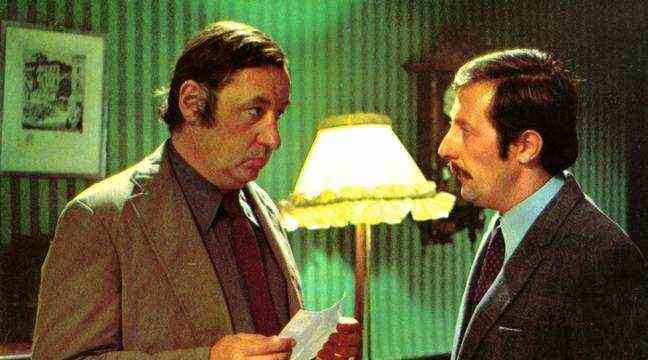Philippe Noiret and Jean Rochefort in L’Horloger de Saint-Paul. – RONALDGRANT / MARY EVANS / SIPA
Bertrand Tavernier, who died this Thursday at the age of 79, has signed several landmark films. Here are five of them, drawn from his eclectic filmography which liked to tackle various genres.
“The watchmaker of Saint Paul”
Produced thanks to the support of Philippe Noiret, who began a fruitful collaboration with the director, The watchmaker of Saint Paul follows the efforts of a somewhat gentrified watchmaker to regain the love of his son who killed a factory keeper. First broken by the news of this crime, he finds himself a father in the midst of the ordeal. Bertrand Tavernier transposes the plot of Simenon’s novel Everton watchmaker in Lyon, his hometown that he loves. Awarded the Louis-Delluc Prize, this first feature film attracted more than a million spectators in theaters in 1974.
” Let the party begin “
Earthy historical fresco on the Regency, Let the party begin in 1975 brought together the “Grand Dukes” of French cinema: Noiret, in Philippe d’Orléans, a notorious debauchery, was advised by Jean Rochefort as Abbé Dubois, an ambitious manipulator. He faces a revolt fomented by the Marquis de Pontcallec, a ruined Breton embodied by Jean-Pierre Marielle. With this second feature film, Tavernier dusted off the film in costumes, criticized Giscard’s France, which he deemed decadent, and won four Césars, including that of best director, at the very first ceremony in history.
” Wipe “
With Wipe, adaptation of the noir novel by the American Jim Thompson, Tavernier in 1981 painted a sticky portrait of a community of corrupt and idle settlers on the eve of the Second World War. Humiliated by his wife (Stéphane Audran) and his lover (Eddy Mitchell), encumbered with a mistress (Isabelle Huppert) and bullied by his superior (Guy Marchand), a pathetic policeman (Philippe Noiret) wants to restore order in his life and that of the village by transforming into a psychopath. With this half-buffoon, half-tragic farce, Tavernier enjoyed immense success, followed by nine César nominations and one at the Oscars. Unfortunately, none was materialized.
“Life and nothing else”
1920: two women of very different social origins (Sabine Azéma and Pascale Vignale) seek to find their missing lovers on the battlefield. Their investigation leads them to Commander Dellaplane (Philippe Noiret, César for best actor) at the head of the office responsible for identifying the victims. By locating the plot of Life and nothing else, released in 1989, in the aftermath of the war, Tavernier escapes homage to heroism in order to concentrate, in convinced peace, on the moral consequences of the conflict. This is not a film about death but a love film focused on the return to life and the duty to remember.
” Quai d’Orsay “
It is the director’s last fictional feature film. Quai d’Orsay, released in 2013, is taken from the comic strip by Antoine Baudry. Bertrand Tavernier moves away from the drama and produces a hilarious comedy by immersing himself in a new environment, that of the Ministry of Foreign Affairs. The film recounts the atmosphere at the “Quai” during the Iraq war in 2003 under the direction of a supercharged minister, Thierry Lhermitte as the avatar of Dominique de Villepin.

